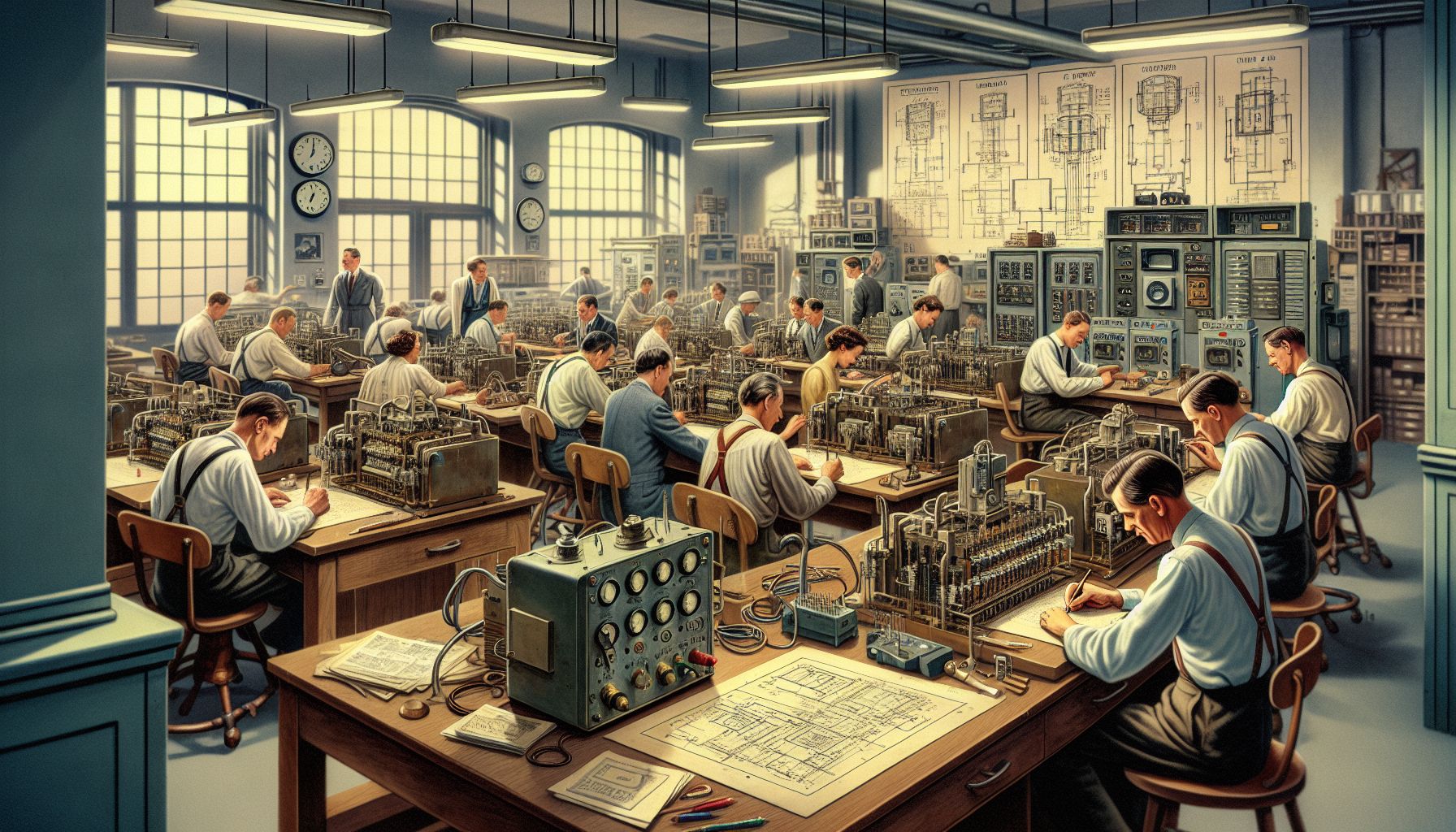📌 Let’s explore the topic in depth and see what insights we can uncover.
⚡ Did you know your smartphone wouldn’t exist without a revolutionary invention made in a small room at Bell Labs in 1947? Welcome to the untold story of the transistor, the unsung hero of the digital age.
From powering the device you’re reading this blog post on, to the technology that enables your favorite video streaming services, transistors are everywhere. Yet, their invention in 1947 at the Bell Laboratories was a remarkable technical feat that changed the world forever. In this blog post, we’ll journey back to the mid-20th century and delve into the fascinating story of the invention of the transistor. We’ll explore the ingenious minds behind this groundbreaking invention, the science that drives it, and the impact it has had on modern technology. This post is a tribute to the revolution that occurred in a humble lab, a revolution that quietly yet fundamentally transformed our lives.
🚀 The Journey Begins: Bell Labs and the Innovators

Unveiling the Birth of Transistor at Bell Labs, 1947
Bell Labs, formerly known as Bell Telephone Laboratories, Inc., was the research and development subsidiary of AT&T. It was the birthplace of numerous groundbreaking technological marvels, not the least of which was the transistor. But who were the masterminds behind this revolutionary invention? Three names stand out: John Bardeen, Walter Brattain, and William Shockley. These three scientists, working together at Bell Labs, would go on to win the 1956 Nobel Prize in Physics for their work on the transistor. Bardeen, the only person to win the Nobel Prize in Physics twice, was a theoretical physicist. Brattain, a practical experimental physicist, was known for his hands-on approach. Shockley, a theoretical physicist, and engineer, was the group’s leader and the one who initially proposed the research that led to the invention of the transistor. This trio of brilliant minds, each with their unique strengths, set out on a journey to revolutionize technology.
🧩 Piecing Together the Puzzle: The Invention of the Transistor
In the mid-1940s, vacuum tubes were the primary electronic devices used to control electrical signals. Yet, these tubes had serious limitations: they were large, fragile, consumed a lot of power, and had a relatively short lifespan. The team at Bell Labs was tasked with finding a viable alternative to the vacuum tube. The goal was to create a solid-state device that could amplify electrical signals. The journey was not easy, filled with numerous trials, errors, and even a few dead ends. After several years of rigorous research and development, the first point-contact transistor was successfully built by Bardeen and Brattain in December 1947. This transistor, a tiny device, was made of a small piece of germanium with two gold contacts applied to its surface. Shockley, feeling somewhat sidelined by his colleagues’ success, went on to develop a more practical and commercially viable version of the transistor: the junction transistor. This type of transistor, which came to be the most commonly used, was easier to manufacture and more reliable than the initial point-contact design.
🎆 The Impact and Legacy of the Transistor
The invention of the transistor had a profound impact on technology and society. It could be likened to the invention of the wheel or the discovery of electricity in terms of its transformative power. 🧩 As for Transistors, they’re the building blocks of modern electronics. They’re found in virtually every electronic device we use today, from smartphones and computers to televisions and digital watches. Without transistors, the digital age as we know it would simply not exist. The transistor also paved the way for miniaturization in electronics. The first computers, which used vacuum tubes, were the size of entire rooms. Today, thanks to transistors, we have computers that fit in the palm of our hand. In fact, a single microprocessor chip today can contain billions of transistors, a testament to how far we’ve come since the invention of the first transistor at Bell Labs.
🚀 A Quantum Leap: The Transistor and the Future
Despite being over 70 years old, the humble transistor is far from obsolete. As we venture further into the digital age, the transistor continues to play a pivotal role in shaping our technological future. 🧩 As for Researchers, they’re continually pushing the boundaries of what’s possible with transistors. For example, scientists are developing quantum transistors, which use the principles of quantum mechanics to perform computations much faster than traditional transistors. Additionally, the advent of nanotechnology has enabled the creation of transistors that are just a few atoms wide, paving the way for even smaller and faster electronic devices. In the world of renewable energy, transistors are also making a significant impact. They’re used in solar panels and other green technologies, helping us transition to a more sustainable future.
🧭 Conclusion
The invention of the transistor at Bell Labs in 1947 marked a turning point in the history of technology. The trio of Bardeen, Brattain, and Shockley, through their sheer genius and relentless pursuit of innovation, brought forth a device that would change the world. The transistor, in the span of a few decades, has transformed from an obscure laboratory invention into the foundation stone of modern electronics. As we stand on the brink of new technological frontiers – quantum computing, nanotechnology, renewable energy – the humble transistor, born in a lab in 1947, continues to play an essential role. So, the next time you pick up your smartphone or sit down at your computer, spare a thought for the tiny transistors that power these devices. These minute components, unassuming yet incredibly powerful, are the silent heroes of the digital revolution.
🌐 Thanks for reading — more tech trends coming soon!
